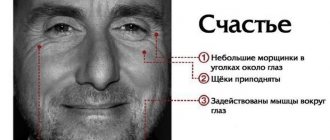Obsessive thoughts and behaviors are grouped together and are more commonly known as obsessive-compulsive disorder (OCD) or obsessive-compulsive disorder. OCD is estimated to affect 2-3% of the country's population, and is listed among the World Health Organization's top 10 diseases in the face of declining income and quality of life. Many people suffering from neurosis hide their condition well and may be embarrassed to seek professional help.
Hypnotherapy session
from 1 to 2 hours
100% hypnosis result
from 1 to 5 sessions
Session cost
10 000 ₽
Efficiency Guarantee
Result from 1st session
Get a free consultation
Find out how hypnotherapy can help you
Sign up
Hypnologists, hypnotherapists
Specialists
Directions for assistance
What we work with
Reviews
Clients about our work
This is a common, chronic disorder in which a person has uncontrollable, repetitive thoughts (obsessions) and actions (compulsions) that they feel like repeating over and over again. They interfere with daily activities and cause significant suffering.
You can try to ignore or stop your obsessive thoughts and actions, but this only increases your distress and anxiety. Eventually, you feel the need to take certain actions to try to relieve stress. Despite attempts to ignore or get rid of the thoughts or actions, they keep coming back. This leads to more ritualistic behavior—an OCD vicious cycle.
OCD often focuses on certain topics—for example, the fear of contracting germs. To ease your fear of infection, you can compulsively wash your hands until they become sore and chapped. If you have OCD, you may feel ashamed of the condition, but treatment can be effective.
Obsessive-compulsive disorder usually involves both thoughts and actions. But there may also be only symptoms of one of the conditions. You may not realize that your obsessions and actions are excessive or unreasonable, but they are time-consuming and disruptive to your daily, social, or work life. These symptoms can affect all aspects of life, such as work, school and personal relationships.
What is OCD?
Intrusive thoughts are persistent, unwanted thoughts about a specific topic. Obsessive actions (compulsions) are repeated physical or mental actions that the patient considers himself obligated to perform. Patients diagnosed with obsessive-compulsive disorder (OCD) often act out their obsessions.
For example, a person may constantly worry that his house will be robbed. To cope with anxiety, a person checks the locks on his doors ten times a night. These behaviors may not actually prevent a robbery or break-in, but the person experiences significant distress if they do not follow these steps.
These conditions usually appear around the age of 19, although in a quarter of cases the onset begins before the age of 14. OCD can affect people of all ages, social classes and ethnic groups.
OCD can last a lifetime if left untreated. Symptoms can interfere with work, relationships, and overall well-being. A psychotherapist can help patients get rid of symptoms and learn to cope with difficulties.
When to ask for help
Not all rituals or habits are compulsive. We all check things twice sometimes. But a person with OCD has the following characteristics:
- Cannot control his thoughts or behavior, even if these thoughts or behavior are excessive
- Spends at least 1 hour per day on these thoughts or behaviors
- Does not enjoy activities or rituals, but may feel some relief from the anxiety the thoughts cause
- Experiencing significant problems in their daily life because of these thoughts or behaviors
Some people with OCD also have a tic disorder. Motor tics are sudden, brief, repetitive movements such as blinking and other eye movements, grimacing, shrugging, and jerking of the head or shoulders.
Research has shown that obsessive-compulsive disorder typically appears in childhood or adolescence, and symptoms may come and go over time or get worse. Some patients have obsessive thoughts but no physical actions. Other anxiety disorders that may accompany obsessive-compulsive disorder are depression, eating disorders, and drug or alcohol abuse.
OCD symptoms
OCD symptoms fall into two categories: obsessions and compulsions. Intrusive thoughts are recurring thoughts or urges that cause anxiety. These thoughts may be rooted in disgust, guilt, or fear. Obsessions often involve one of the following themes:
- Cleanliness: frequent thoughts about illness, dirt, etc. Patients overestimate the threat of contamination.
- Lack of order: Obsessions are often related to symmetry and completeness. The person may feel that something is out of order or “out of balance.” These are exaggerated perfectionistic tendencies and the need for control.
- Fear of harm. Often thoughts arise about accidents, injuries, etc. A person may be afraid of harming himself or loved ones. Patients may feel responsible for preventing tragedies by acting out their compulsive behaviors.
- Forbidden thoughts: This category includes intrusive thoughts about committing some taboo. For example, one person may be afraid of losing control and at the same time mentally swear during a business meeting. Another may imagine setting a building on fire, even though he doesn't want to do it.
Someone may have obsessions in multiple categories. Themes of obsession may change over time. When a person's obsessions are united by a religious theme, it is called religious OCD or obsession.
Obsessions can cause serious distress when they conflict with a person's ethics and character. However, such thoughts do not coincide with intention. A person with obsessive thoughts about hitting pedestrians is unlikely to commit murder. On the contrary, he is likely to be a more careful driver than the average person because the idea of harming others bothers him greatly.
Compulsive symptoms in OCD
People with OCD often use compulsions to keep their obsessions at bay. For example, an anxious patient checks the smell of his breath. Some actions are taken to relieve stress, others are aimed at preventing a dangerous event. A compulsive action does not necessarily have a logical connection with an obsession. For example, a child may count steps to prevent the death of a parent. However, if actions and thoughts are related, the action will be very disproportionate to the risk.
Obsessive-compulsive behavior is frequently and excessively repeated. It almost always interferes with everyday life. Some people feel forced to spend hours on their compulsive needs. Others may go out of their way to avoid certain triggers. Many people with OCD know that their behavior is not “logical”, but they still feel anxious and confused until they complete the necessary “ritual”.
How to Respond: Developing Skills
Self-regulation skills
Self-regulation skills are any actions that allow your child to manage their emotions and behavior.
Helping your child identify when they are feeling stressed or anxious and using alternative responses to those situations (eg, relaxation exercises, asking parents for help) will help reduce repetitive and ritualistic behavior over time.
Research shows that when a person becomes more aware of their compulsive or repetitive behavior, it decreases significantly. The same applies to people with severe intellectual disabilities (Koegel et al, 1995, in Howlin, 1998).
Social skills training
Teaching social skills, such as how to start and end a conversation, what to talk about with other people, and how to spot "cues" in another person's behavior (for example, if another person raises their eyebrows, it means they want to say or argue something in your words), helps a person with ASD become more confident in communicating with other people. This confidence reduces the need to compulsively talk about the same subject or special interest.
How to cope with change
We've already discussed how you can prepare your child for change. However, if unexpected changes occur and your child finds them difficult to cope with, try switching them to a calming activity, or encourage them to use simple calming techniques such as breathing exercises.
You can use praise and rewards every time your child copes well with change. In the long run, this will help your child increase their tolerance for change.
Try alternative activities
One way to stop your child's repetitive behavior is to find another, equally enjoyable activity that will perform the same function. Here are some examples:
- If your child rocks for sensory stimulation, you may want to try a swing.
- If your child is waving his fingers in front of his face for visual stimulation, he can play with a kaleidoscope and a bubble gun.
- If your child puts non-edible objects in his mouth, you can give him a bag of edible alternatives (which provide a similar sensory experience), such as raw pasta or noodles, seeds or nuts.
- If your child smears his feces, you can give him play dough as a substitute.
Compulsive behavior may include:
- Check: A person may get up several times a night to make sure the iron is turned off. May also reread each email or text a dozen times to check for typos.
- Cleaning: People with OCD can wash their hands until the skin cracks. They can also disinfect household items after each use (instead of following the instructions in the owner's manual).
- Repositioning/Repetition: A person may press a light switch a certain number of times or straighten clothing until it is perfectly straight.
- Withdrawal: A person may repeat the same phrase to “cleanse” themselves of sexual thoughts or unpleasant images.
When a person's obsessive feelings are not obvious to observers, they are said to have pure obsessive OCD (also called pure OCD). For example, a person may silently count to 100 after completing certain tasks to ensure that they end with a “safe” thought. Another, for example, may mentally recite strings of words to make sure he doesn't lose his memory. Compulsions can interfere with a person's functioning, even if they are not visible to others.
Obsessive actions
These are actions that the patient feels obligated to perform in order to reduce anxiety. They are repeated constantly and are often done unconsciously. Examples of behaviors include washing something excessively, counting and touching things, hoarding unnecessary items, constantly checking something, repeating certain words or phrases, and engaging in ritualistic behavior.
Compulsions are repetitive behaviors that a person with OCD experiences in response to an intrusive thought . These repetitive behaviors are designed to prevent or reduce the anxiety associated with your obsessions, or prevent something bad from happening. However, they do not bring pleasure and can only provide temporary relief from anxiety.
You can create rules or rituals to help you control your anxiety when you have intrusive thoughts. These actions are excessive and often have no real relationship to the problem they are intended to solve.
As with thoughts, actions have something in common:
- Washing and cleaning
- Examination
- Count
- Law abiding
- Following strict rules
Examples of signs and symptoms of action:
- Hand washing
- Rechecking doors to make sure they are locked
- Rechecking the stove to make sure it is turned off
- Counting items
- Repeating a prayer, word or phrase
- Arrange your canned goods the same way.
- Excessive concern for cleanliness
- Arranging things in a certain way
What Causes OCD?
There are many factors that can contribute to obsessive compulsive behavior. Both biochemistry and environment may play a role.
Many people sometimes have intrusive thoughts. However, OCD patients believe that these thoughts reflect their inner character or influence the outer world. Additional attention may increase the perceived importance of thoughts, increasing obsessions. Compulsions may develop as inappropriate attempts to block these sad thoughts.
Trauma can also lead to obsessions and compulsions. Children who are physically or sexually abused are more likely to develop OCD. Traumatic events (such as a car accident) can also contribute to this.
Daily stress may not cause OCD, but it can make existing symptoms worse. The family environment may play a role. If children have a close relative (such as a parent or sibling) with OCD, their own risk of developing OCD doubles. If a relative developed OCD as a child, they are 10 times more likely to develop OCD than others.
A study from the National Institute of Mental Health (USA) linked OCD to two genetic mutations. Mutations make it difficult for serotonin to move properly in the brain. Serotonin promotes feelings of satisfaction and well-being. If serotonin levels are low, a person may experience anxiety.
OCD is also associated with dysfunction in one of the brain circuits. The circuit is activated when a person receives an impulse. After someone performs the appropriate action, the neuron's signals usually stop and the person feels satisfied. In the case of OCD, the neurons continue to fire. The person still has momentum and may have to perform the action several times before they discover the same satisfaction that others get from a single action.
Experts estimate that 1 in 2,000 children may develop obsessive-compulsive behavior after a streptococcal infection. This condition is called pediatric autoimmune neuropsychiatric disorders associated with streptococcal infections, or PANDAS. Many experts believe that PANDAS is an immune reaction. When a streptococcal infection occurs, the antibodies sometimes affect parts of the brain. This may cause a sudden development of obsessive ideas and actions.
Other studies show that streptococcal infection does not cause OCD symptoms. Instead, the infection may cause symptoms in children who were already predisposed to the disease.
How to react: results
- Ask yourself whether this obsession, routine, or repetitive behavior is truly limiting your child's life opportunities, causing stress or discomfort, and interfering with his learning. If not, then why interfere?
- Consider the function of repetitive behavior, routine, or obsessive interest. What does your child get thanks to them?
- Intervene early: Set gradual limits on repetitive behaviors or compulsive interests from a young age (and watch for new behaviors to emerge).
- Try to make your child's world as structured and predictable a place as possible. Try to use visual supports (such as daily routines), social stories, and pre-planning strategies to prepare your child for a potentially stressful event. These strategies can reduce dependence on routines and repetitive behaviors.
- Help your child develop new skills, such as learning social skills, relaxation techniques, or recognizing their own emotions. All of these skills will help the child cope with stress and uncertainty (and therefore lead to a reduction in repetitive behavior).
- Consider alternative behaviors the child can use instead of the repetitive behavior or obsessive interest.
- If necessary, set clear and consistent limits - for example, limit the number of items, time or place where the child is allowed to practice this or that behavior.
- Remember that compulsions and repetitive behavior can serve a therapeutic function and help the child relax and calm down when overstimulated. Never take away access to a compulsion or ban the behavior completely - this can be very stressful. Make progressive change your goal.
- If possible, use obsessive interests for good - they can become a reason for communication, learning new skills and improving self-esteem. There is a possibility that in the future the person will be able to get an education or find a job in a field that is associated with an obsessive interest.
The material presented above is a translation of the text “Obsessions, repetitive behavior and routines”.
How to detect OCD in children?
Some parents may struggle to distinguish OCD from typical child behavior. Some rituals, such as bedtime prayers or toy placement, may simply be age-appropriate. However, when habits interfere with school or friendships, there may be cause for concern.
Common signs of OCD in children include:
- Irritability
- Difficulty making decisions
- An inexplicable desire to be alone
- Refusal to communicate with friends
- Required to stay home or at school to complete assignments
- Excessive time spent on daily tasks, trouble sleeping
- Extreme reactions to minor changes in daily life
Children and adolescents are more likely to experience harm-related symptoms than adults. Typically, children obsessively ask adults to calm them down. They often crave routine and consistency.
Gender and ethnic differences in OCD
Adult women tend to have higher rates of OCD than men. However, men are more likely to develop obsessions and compulsive behaviors during childhood. Women are more likely to have cleaning-related symptoms. Symptoms in men more often fall into the categories of symmetry or taboo. Men are also more likely to have comorbid disease than women.
The prevalence of OCD is similar across ethnic groups. Internationally, prevalence rates range from 0.3% (Brazil) to 2.7% (Hungary). The age of onset and the nature of symptoms are usually the same in different countries. However, the culture of a region may influence which topics are more common.
Symptoms Associated with OCD
Associated symptoms are more common in people with OCD than those without the diagnosis and include:
- Body Dysmorphia: A person is obsessed with imperfections in their body. They may look in mirrors all the time, over-groom themselves, or constantly compare their appearance to other people's.
- Trichotillomania: The person repeatedly pulls out their own hair, often on the scalp or from the eyebrows. The condition can lead to significant hair loss.
- Irritation: The person feels the need to pick at their skin. This behavior is often time-consuming and can result in bodily harm.
- Hoarding: The person tries hard to keep any items, even if they are no longer needed. The resulting clutter can put a strain on relationships and living space.
- Koro: A person believes that his genitals (penis, nipples or breasts) will retract into the body and disappear. As a result, he tugs on the organ to delay its disappearance.
- Olfactory reference syndrome: a person worries that he has an unpleasant body odor. He may constantly smell his body or shower excessively.
All of these conditions are treatable. Treating the disorder with psychotherapy can help people stop compulsive behavior and experience less stress.
Repetitive behavior
“I panic easily [in social situations]. And is it any wonder that in this case I want to isolate myself from the world around me in order to literally put my thoughts in order? That I start swaying to tell myself that my body still belongs to me? That I start talking to myself or moaning to block out external sounds and find out which thoughts belong to me? It seems to me that every person who perceives life in a similar way would do the same,” – an adult with autism.
Repetitive behavior may include flapping the arms or hands, moving fingers, rocking the body, jumping, spinning and spinning, banging the head against the floor or walls, and highly complex body movements.
Also common are repetitive manipulations of an object, such as snapping a rubber band or fiddling with a piece of string, as well as repetitive movements combined with sensory input (such as repeatedly touching a particular fabric or surface).
Many people with ASD have sensory sensitivity that is higher or lower than normal for sight, sound, smell, taste, and touch. This sensitivity can also relate to balance (vestibular system) and body awareness (proprioception - knowledge of the position of parts of one's body and their movements). Repetitive behavior may be a way to cope with sensory sensitivity. For more information on this topic, see the article “The Sensory World of Autism.”
Although repetitive behavior varies from person to person, the reasons for the behavior may be the same:
- attempting to gain sensory sensations, such as rocking, may be a way to stimulate the vestibular system; waving your arms can provide visual stimulation
- an attempt to reduce sensory sensations, for example, if you focus on a certain sound, this helps to disconnect from a noisy, highly stressful environment; This is most common in social situations
- a way to cope with stress and anxiety, to disconnect from an uncertain reality. Some teens and adults may suddenly develop old repetitive behaviors, such as flapping or rocking, if they are feeling very anxious or stressed.
- a source of pleasure and a way to pass time.











